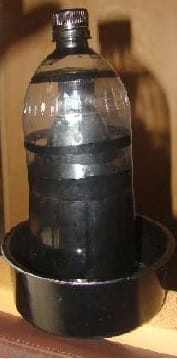
After recent cases of Dengue in Bengaluru, many residents are looking for preventive measures. And many are discussing Ovitrap as an effective preventive measure that can trap mosquitoes that spread Dengue. How effective is Ovitrap in Bangalore?
We have to understand what is Dengue and how does Ovitrap work. Dengue is a vector-borne disease, caused by mosquitoes that breed on water. A mosquito named Aedes Aegypti is the host of Dengue virus. Researchers say that most Aedes Aegypti do not fly beyond than 100 metres, and bite only during day time.
What is a lethal Ovitrap?
Lethal Ovitrap is a modified version of Ovitrap, developed in 1966. Ovitraps that were used for mosquito surveillance were later modified to trap the mosquitoes and kill them.
There are three types of Ovitraps: Lethal Ovitrap, autocidal Ovitrap and sticky Ovitrap. Lethal Ovitrap makes use of insecticide, while autocidal Ovitrap traps the mosquito and kills them. Sticky Ovitrap makes use of a sticky substance on which the female mosquitoes get stuck.
Advocates of lethal Ovitrap say that the Aedes Aegypti find Ovitraps as an ideal location to lay their eggs, though there is no scientific proof to it.
The best part of this device is it can be easily made at home. Here is a slide show to give you an idea on how to make lethal Ovitrap:
Mosquito-breeding container
In 1990s, two U S military research scientists Michael Perich of the Walter Reed Army Institute of Research (WRAIR) and Brian Zeichner of the U S Army Center for Health Promotion and Preventive Medicine, developed the first Lethal Mosquito Breeding Container. It was a result of modification of Ovitrap, which was initially invented in 1966 to monitor the Aedes Aegypti and Aedes Albopictus population.
Many countries like Singapore, Brazil and United States of America have found making use of such lethal traps to keep a check on Dengue useful. However there has been no substantial proof that the population of mosquitoes were really affected.
World Health Organisation has not endorsed it as a successful tool to reduce the incidences of Dengue. It is still being experimented along with other tools like insecticide treated materials. Apparently,when Singapore made used of lethal Ovitraps the incidences of Dengue fell considerably. However, apart from Singapore in no other country it has been proved successful.
World Health Organisation (WHO) has not given any permanent solution for Dengue. WHO recommends people keep their surroundings clean, keep gutters free flowing, etc. to avoid breeding of mosquitoes. Easy, immediate and most effective way to stop the breeding of mosquitoes is to eliminate waterlog in and around your house.
All you need is:
- Bottle A : One-litre plastic bottle. Paint it with black color and cut it into half.
- Bottle B: Quarter litre bottle, paint half of it with black color. Fill water in it.
- A black bowl
- A circular mesh. There should be a hole in the centre, like donut. It should be big enough for the lower end of the bottle A to fit in it.
Procedure
- Place the mesh inside the bowl.
- Pour water in the bowl until the mesh starts floating at the brim of the bowl.
- Make two holes on two opposite sides of the lower half of bottle A.
- Place lower half of bottle A over the bowl, between the mesh.
- Press bottle A until water enters it.
- Make a hole at the bottom of the bottle B and place it over lower half of bottle A. Bottle B will act as a reservoir when the water level in the bowl decreases.
- Now place the top half of the bottle A over its lower half.
- Your autocidal lethal Ovitrap is ready to use.
How does it work?
Female mosquitoes lay eggs on the mesh. These eggs fall beneath the mesh into the water, where they will be transformed into an adult mosquito, but cannot come out. Mesh obstructs it from escaping and it eventually dies.
This is how autocidal Ovitrap works. To make the lethal Ovitrap, you should add insecticide on the mesh. To make it a sticky Ovitrap, make use of sticky substances on the surface of the mesh that will trap the adult mosquitoes.
Remember to monitor your Ovitrap frequently, to prevent it from becoming a productive habitat for mosquitoes.
Is it successful?
Initially when the device was invented, it was used to monitor the mosquito population and for researches. But will Ovitrap be successful in the Bangalore setting, is still an open question.
Dr. Kasturi Arvind, Department of Community Health and Medicine, St Johns Medical College said, “Theoretically yes, Ovitrap can stop breeding of mosquitoes but how feasible it will be, is still a question, as Bangalore has diverse breeding areas.” The prerequisite to using a Ovitrap is, there has to be sufficient amount of sanitation in the area, to ensure that mosquitoes don’t breed elsewhere, he added.
Dr. Arvind said people are better off taking precautions, wearing full-sleeved clothes, and avoiding unnecessary storage of water in buckets or tanks.